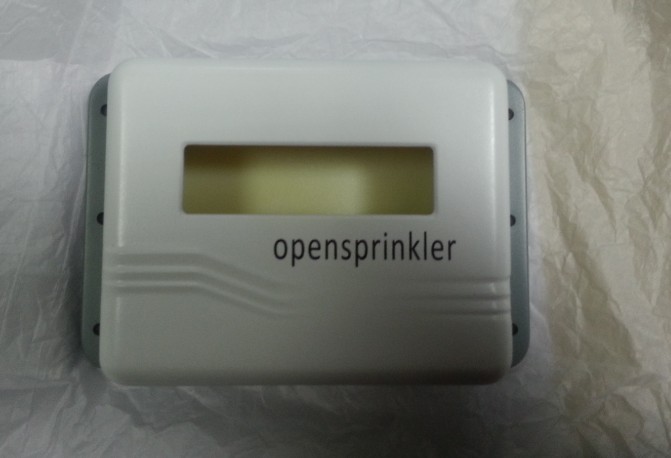


🙂īesides having integrated the xiaomi vacuum cleaner robot to my system, I have actually also integrated a large number of air filters to my automation system (homeassistant -> bridged into openLuup) for quite sometime. In Sweden the electrical tarrifs will change from daily rates to being higher when demand is higher, perhaps then this can be used.Īll in all a fun DIY project that provides some useful data out of the electrical meter.
OPENSPRINKLER 3D ENCLOSURE CODE
I also managed to grab the hourly prices in json format and display that in the dashboard via some lua code in a scene.Īt the moment I have built no logic around this, but it opens up posibilities for sure. It is quite useful to be able to see the load over time per phase etc.Ī8276d7b-6b39-4f3a-a663-353173c1da5b-image.png In order to get a good overview of the data from the meter I have started creating a dashboard in Grafana that gets data from Historian in OpenLuup. It is also possible to buy a readymade P1 meter, this one looks quite nice, although I have not tested it. The version I use is even simpler since it does not need the transistor.įor a lot of the meters delivered (DSMR 5 versions if I am right) you can power the ESP from the 5V provided in the RJ12 port, very handy.Ĥ2092756-f6b3-4375-9000-04bcd1e22240-image.png a Wemos mini and then a transistor and two resistors (image below). For the Tasmota variant and most of the other solutions you need a ESP8266, e.g. The upside with this version is that it is adapted to the Swedish data fomat that differs from the Dutch a bit and that it delivers the data in Mqtt form:Ģaab179b-a9ea-4041-8c38-f73570206e11-image.png I found a few other alternatives and tested one of them.
OPENSPRINKLER 3D ENCLOSURE SERIAL
I tried this and it works, but unfortunately I got some serial data errors every 5-10th message for some reason so I decided to try another solution. My initial though was to use the Tasmota P1 Smart Meter with Mqtt.

The data will show both consumption and production if you e.g. The dataport is a serial "P1" port in the form of a RJ12 contact that sends quite a lot of data every 10 seconds:Ĭ716b64e-dcac-4ea4-9b1b-8ee29eb55edc-image.png Norway has selected a different version with a RJ45 port with another protocol. It is more or less the same type of meter that is used in a number of European countries, e.g. The new meter is a "smart" meter equipped with a data port. Has anyone thought about whether it is feasible to change the hub's SO so that it becomes a host for MSR, for example? Or even Home Assistance? I have no knowledge, but it seems to me that processor and memory have to do something like that, already has embedded wifi and network.ĭoes anyone have any idea if it is possible to give this equipment a destination other than a box?Ībout one month ago I got a new electrical meter in the house. I see many saying that it has become a laboratory, I don't see much sense, since it is becoming obsolete and without a drive. So I wanted to open a debate, for those who have not yet sold their Vera on eBay, are with the equipment idle, what destination could be given? In the past, I had already been informed that when the migration was over, my Vera would go to the incinerator, or under the wheel of my car, and of course, I did not comply. Well with all that has been going on with Vera/eZlo, many people are abandoning the Vera hubs and moving on to other solutions, such as Hubitat (my case), HASS, HA, and many other controllers.


 0 kommentar(er)
0 kommentar(er)
